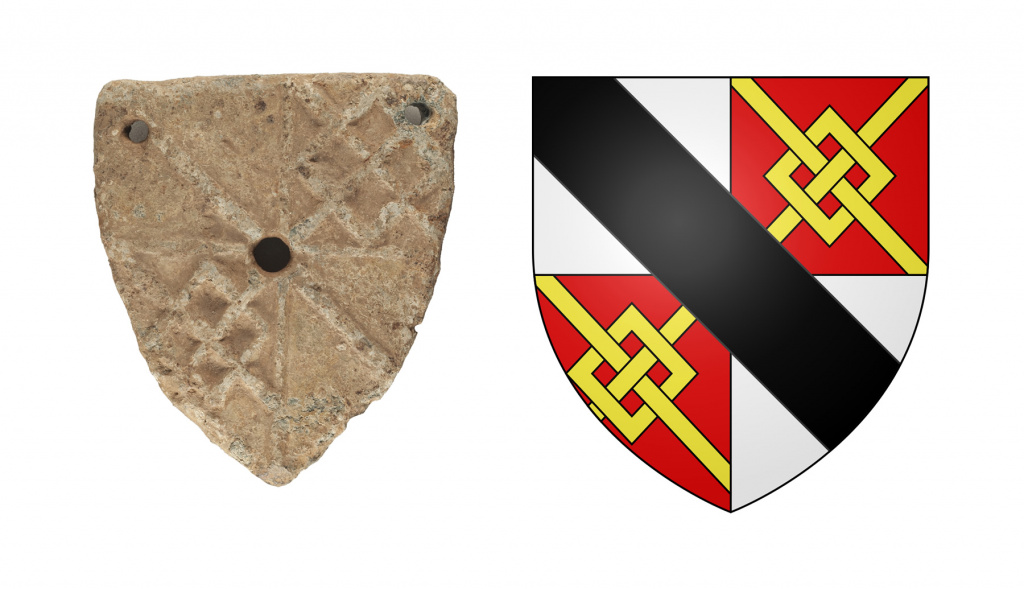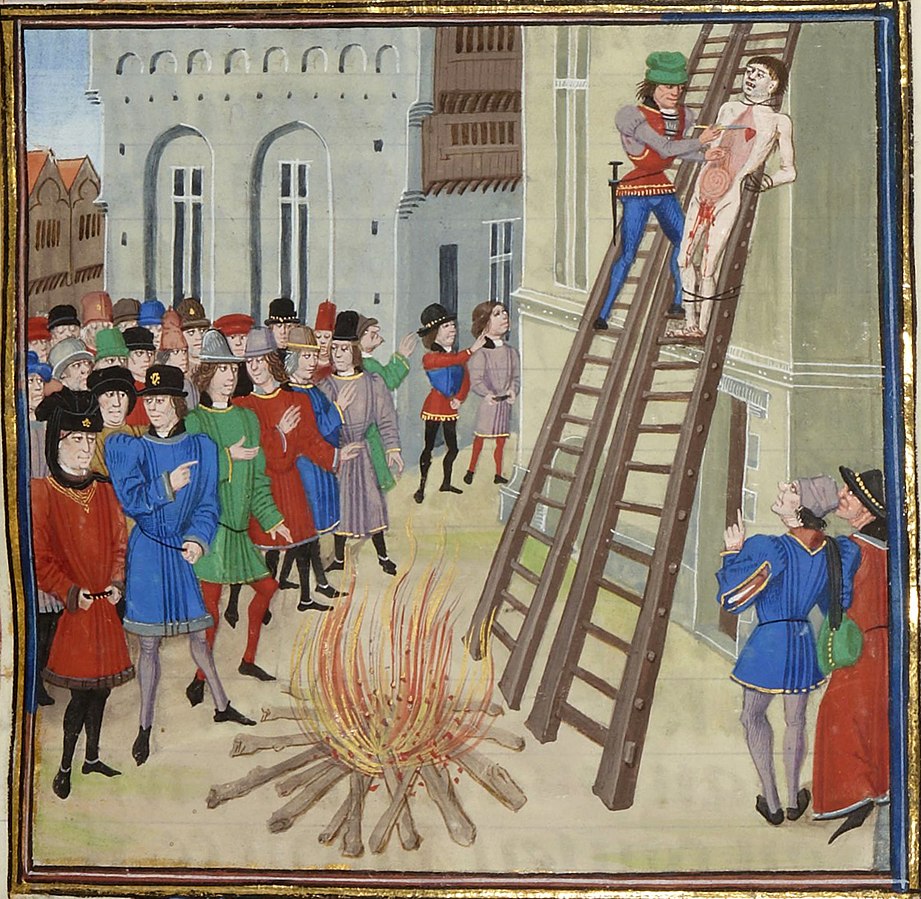Despenser Family trade weight
This cast lead object is thought to be a trade weight. Shield-shaped weights are used from about AD 1380 and continue into the 15th Century. The weight is slightly over three troy ounces. It is considered a Find of Note: County importance
Despenser Family

The coat of arms on the weight are very likely to be of the Despenser family.
The Despensers were a powerful and infamous family that rose to prominence during the reign of Edward II.
As described below, three Despenser lords were executed and one died in battle.
Hugh the Justiciar, 1st Baron le Despenser (1223 – 1265)
An important ally of Simon de Montfort during the reign of Henry III. He was killed at de Montfort’s side at the Battle of Evesham in August 1265 by Roger Mortimer. This led to a feud between the Despencer and Mortimer families.
Hugh Despenser the Elder (1261 – 1326)
The Elder Despenser served Edward I in battle and as a diplomat. He was for a time chief adviser to Edward II. In 1326, after Queen Isabella’s successful rebellion against her husband, Edward II, Hugh the Elder was put on trial. Isabella wanted to save him but Roger Mortimer (grandson of the Roger Mortimer that had killed Hugh the Justiciar) insisted that he was executed. He was hung in his armour and then beheaded.
Hugh Despenser the Younger (c1288 – 1326)
Hugh Despenser the Younger rose to national prominence as the favourite, some say lover, of Edward II. He was married to Eleanor, sister of the last Earl of Gloucester. When Gloucester died at Bannockburn in 1314 he had no direct descendants and his vast estates and titles passed into royal possession. In 1316 Edward II split the English assets equally between Gloucester’s three sisters but gave Hugh The Younger the entire lordship of Glamorgan and the de Clare lands. This led to resentment amongst other barons.
By his continued greed, corrupt dealings and favouritism by the king, Hugh the Younger became the most hated baron in the country. In 1321, at the behest of Queen Isabella, King Edward exiled Hugh and his father. However, Edward couldn’t manage without them and summoned them back in 1322. This led to the Despenser war in which Edward and Despensers triumphed against Queen Isabella and Roger Mortimer.
The tide turned in 1326 when Isabella and Mortimer triumphed and both Despensers were captured and put on trial.
Execution of Hugh Despenser the Younger

Some contemporary account have Despenser hanged, drawn and quartered. Jean Froissart account was that he was dragged naked through the streets and then hanged. He was released before being asphyxiated and then tied to ladder, genitals sliced off, entrails pulled out and burnt alive.
Hugh le Despenser, Baron le Despenser (1308 – 1349)
The eldest son of Hugh the Younger, Baron le Despenser was imprisoned in 1327 for his support of Edward II but released when Edward III came to power.

Photo: Llyfrgell Genedlaethol Cymru / The National Library of Wales, CC BY SA2.0
He became lord of Glamorgan in 1338 as shown in his seal -which reads S(IGILLUM) HUGONIS LE DESPENSER D(OMI)NI GLAMORGANCIE ET MORGANCIE
Edward Despenser (1336 – 1375)
Baron le Despenser had no children and his land and title of Lord of Glamorgan passed to his nephew, Edward Despenser. Edward went with the Black Prince to France and was present at the Battle of Poitiers. He was a friend and patron of Jean Froissart (the man who provided the vivid account of his father’s death).
Thomas Despenser, 1st Earl of Gloucester (1373 – 1400)
Thomas Despenser was a supporter of Richard II, who rewarded him by making him Earl of Gloucester in 1397. However, when Richard II abdicated and Henry IV became king, Thomas and other earls were demoted from the titles given by Richard. This led to the Epiphany Rising which quickly failed. Thomas Despenser was captured by a mob and beheaded.
Richard Despenser, 4th Baron Burghersh (1396 – 1414)
Son and heir of Thomas Despenser. He died young without any issue.
Isabel Despenser, Countess of Warwick (1400 – 1439)
Isabel was the posthumous daughter and eventually the sole heiress of Thomas le Despenser. She was born six months after her father had been beheaded.
She married into the Beauchamp family, first to Richard de Beauchamp, (1st Earl of Worcester) and on his death to his cousin, another Richard de Beauchamp (13th Earl of Warwick). She was grandmother to Richard III’s queen, Anne Neville.

